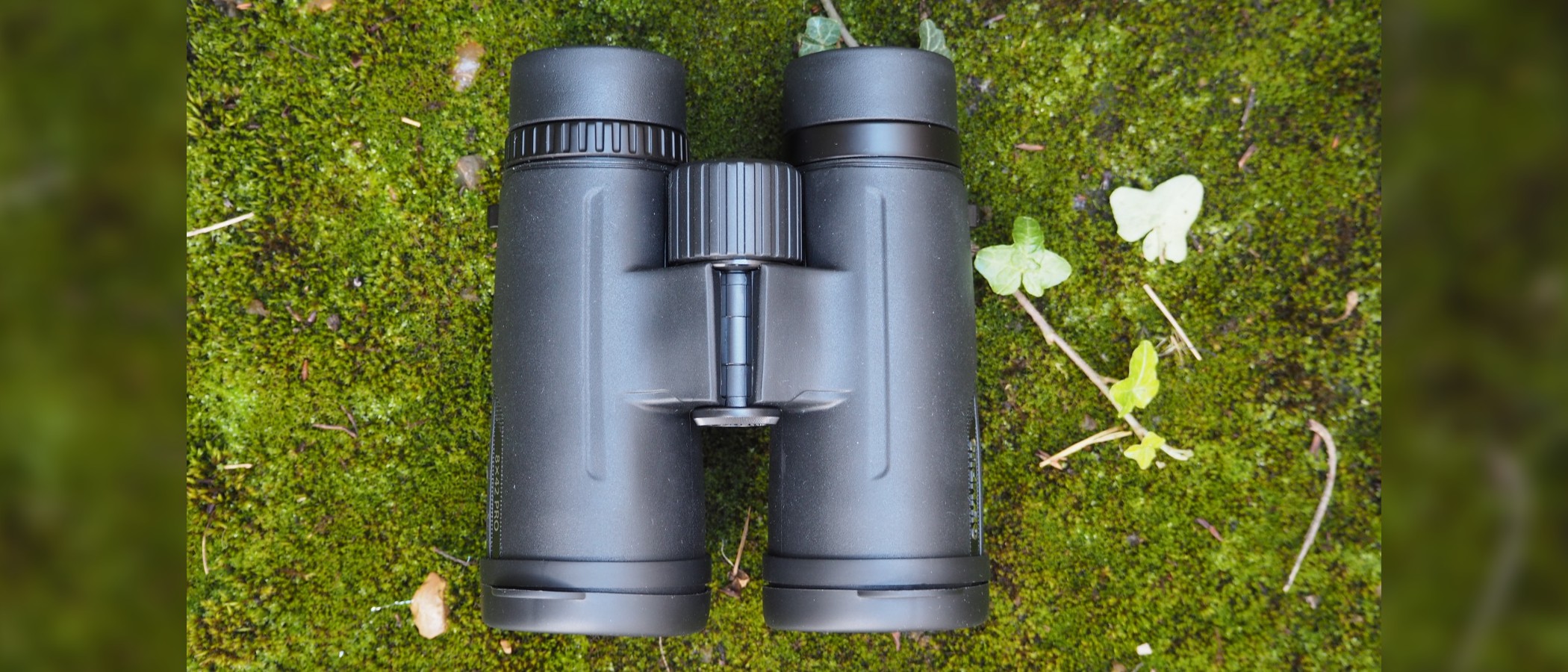Live Science Verdict
If you're looking for a pair of binoculars for exploring the natural world, then these Olympus 8x42 Pro are a fine choice. They're well-built and protected against the elements, and offer great optics for viewing birds and other wildlife. They're a little pricey, but you get what you pay for.
Pros
- +
Zuiko optics
- +
Oil repellent lens coatings and waterproof construction
- +
Good build quality
Cons
- -
Expensive
- -
No provided screw thread for tripod mounting
Why you can trust Live Science
Magnification: 8x
Objective diameter: 42 mm
Field of view at 100m: 13.1 m
Closest focusing distance: 1.5 m
Eye relief: 18 mm
Weight: 1.48 lbs / 670 g
Dimensions: 131 x 140 x 53 mm
If you’re looking for premium binoculars but don’t want to shell out the big money for Zeiss or Leica models, then these Olympus 8x42 Pro binoculars might be exactly what you’re looking for.
Primarily aimed at bird watchers and nature lovers, the Olympus 8x42 Pro binoculars are for those who want to capture the beauty of the natural world in stunning clarity.
The ‘Pro’ on the end of the model name here refers to the pro-grade Zuiko optics employed by these binos with the aim of offering improved light transmission. It’s the same lens expertise that was enjoyed by Olympus’ camera range for years – even if Olympus as a camera brand no longer technically exists, having been subjected to a buy-out in Japan last year and re-named OM Digital Solutions. However, the Olympus name still carries with it 100 years of heritage which offers some peace of mind that your money is going towards a quality product.
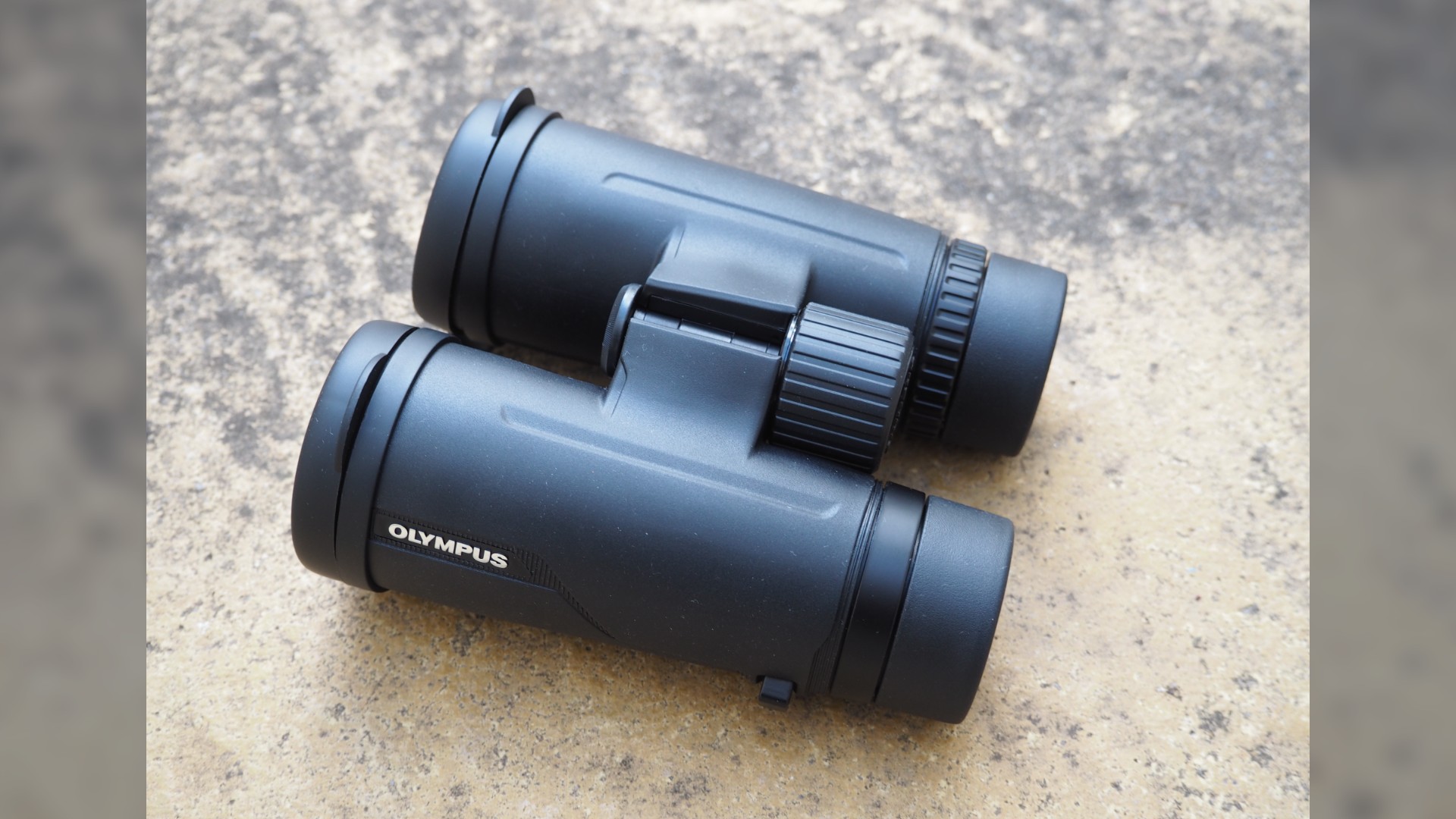
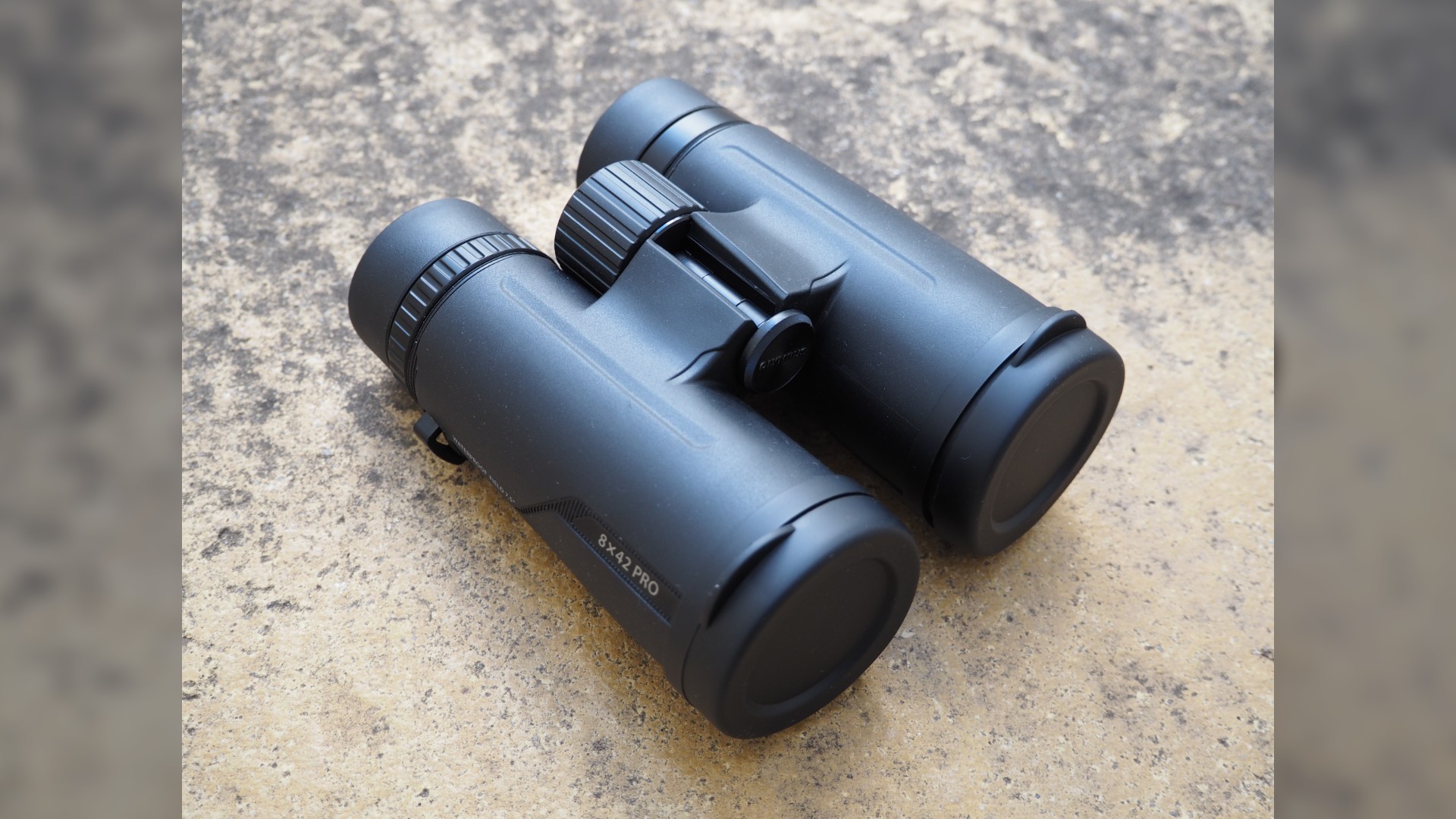
As we’d expect of any of the best binoculars designed for use in the great outdoors, the rugged construction here is waterproof, with the exposed glass surfaces being oil repellent, and the body nitrogen filled to prevent fogging. At just shy of 1.5 lbs., they’re not the lightest pair of binoculars, but they do have a compact profile and will still comfortably squeeze into a pocket of a winter jacket. Alternatively, a padded strap is provided should you want to wear it over a shoulder or around your neck instead.
So, with the Olympus 8x42 Pro binoculars sounding promising on paper and initial handling impressions being positive, how do they fare in practice?
Olympus 8x42 Pro: Features
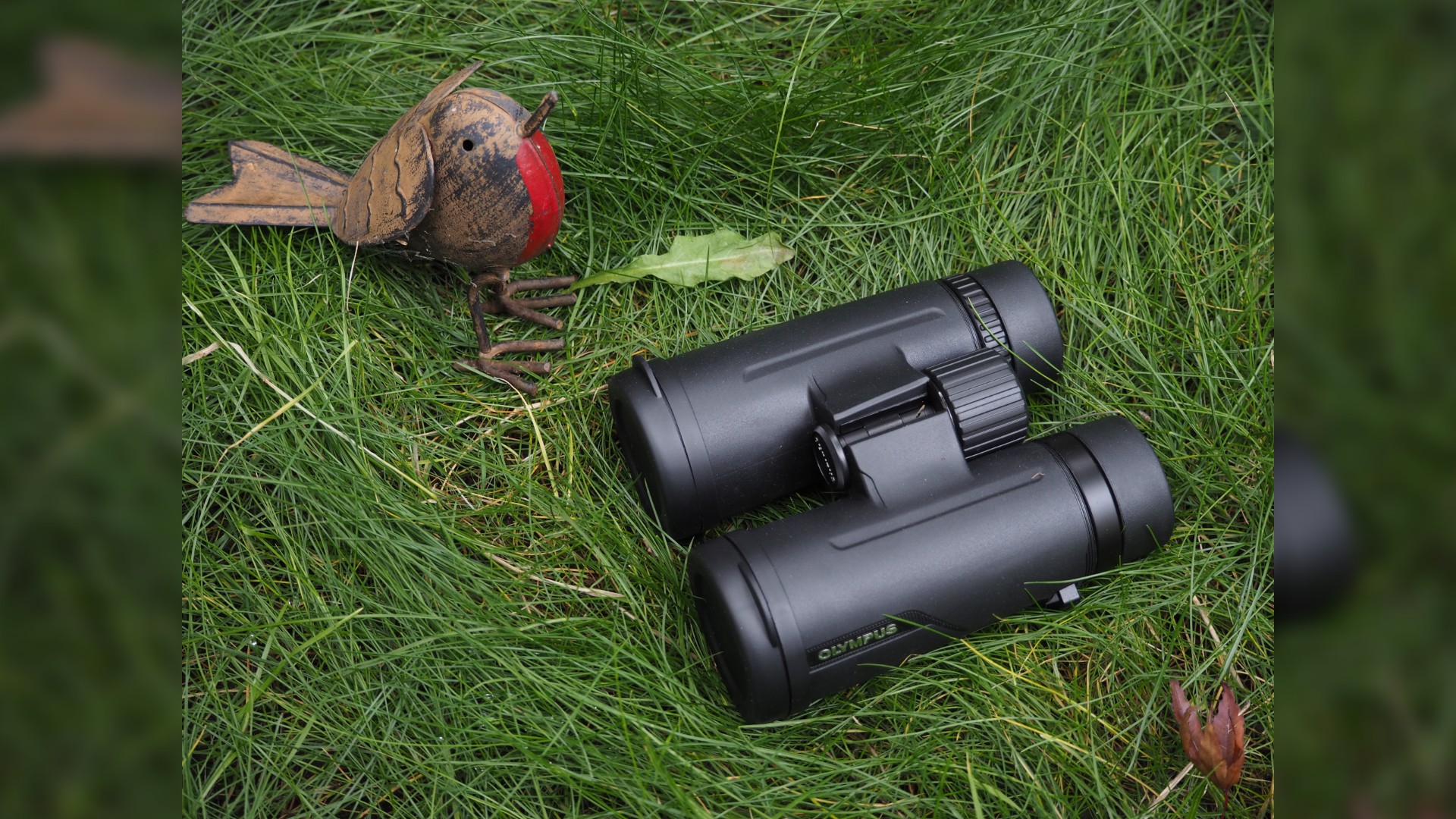
As with any binoculars, the core specifications to focus in on here are the 8x magnification factor wedded to a usefully large 42 mm objective lens size. If an 8x magnification doesn’t give sufficient ‘poke’ for your purposes, then there's also the Olympus 10x42 mm Pro binoculars in this same ‘Pro’ series.
Like the Steiner Safari Ultrasharp 10x26, the Olympus 8x42 Pro offers decent specs while maintaining sufficiently compact proportions - just great when travelling, or enjoying a day out. They also feature a central folding mechanism that can adjust the distance between the eyepieces to achieve a more comfortable fit, and an observational viewpoint that doesn’t give you a headache.
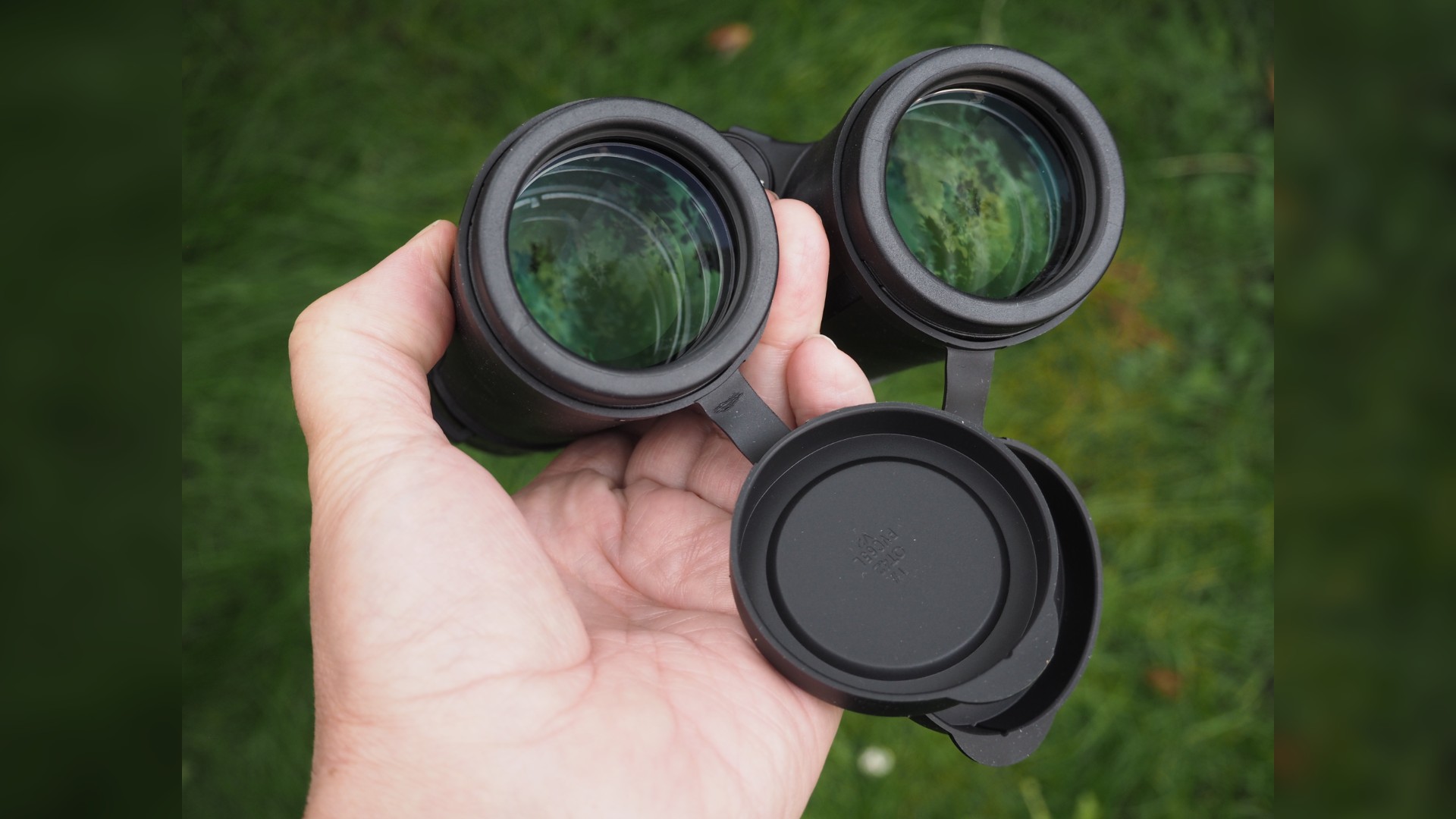
As you might reasonably expect at this price point, the Olympus 8x42 Pro binoculars is nitrogen purged to help prevent fogging. The device also has a rubber-feel surface to ensure they won’t readily slip from your grip during wet conditions. In terms of overall waterproofing, they should survive being dunked in water up to a meter in depth for around five minutes (admittedly we weren't brave enough to test that out for real).
Another great feature about the Olympus 8x42 Pro binoculars is their premium optics, including the clever extra low dispersion ‘ED’ lens elements to compensate for any chromatic aberration. The Olympus’ lens coatings are further oil and water repellent, thus helping prevent greasy smears and water droplets affecting viewing.
Olympus 8x42 Pro: Design & Handling
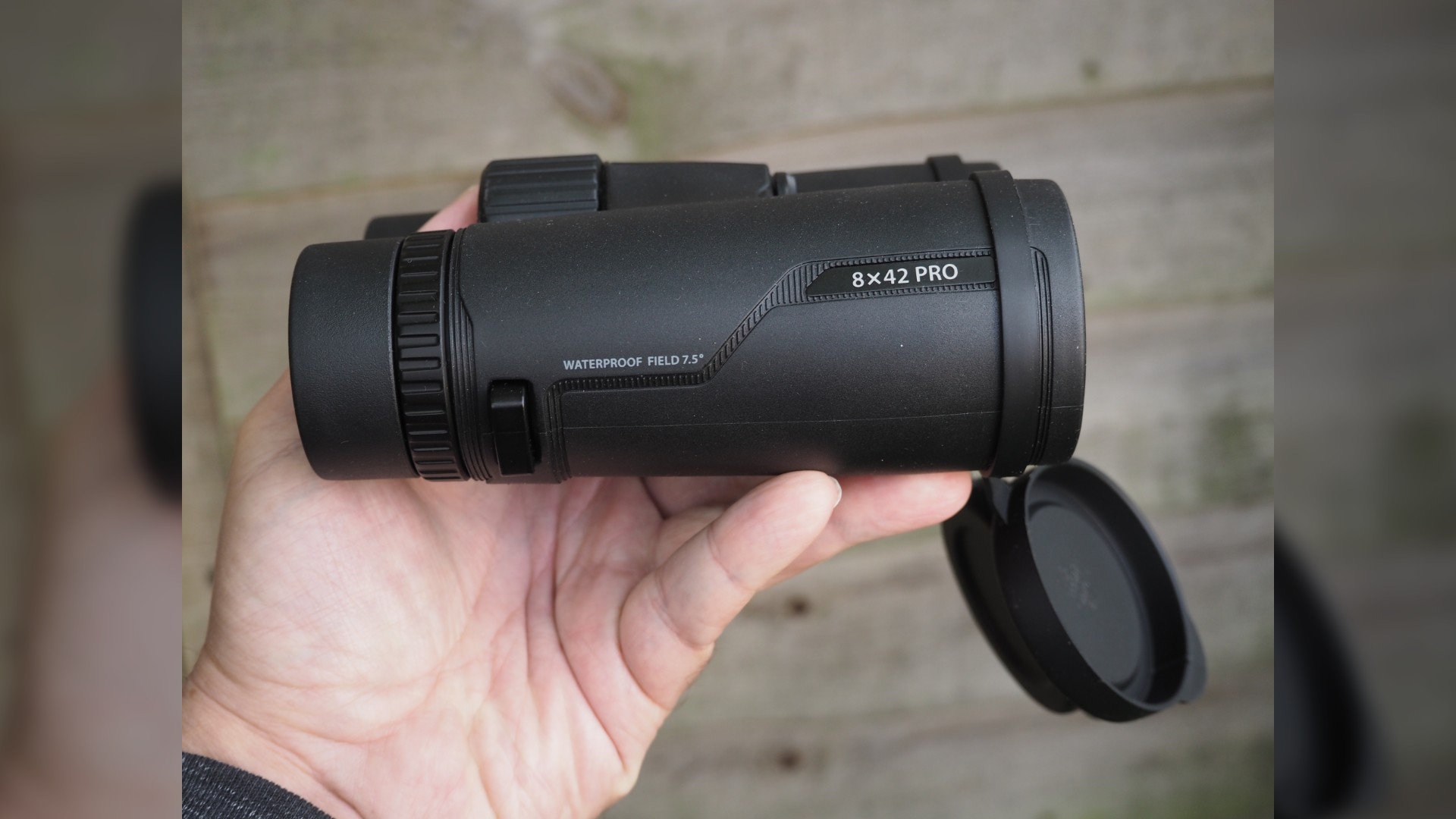
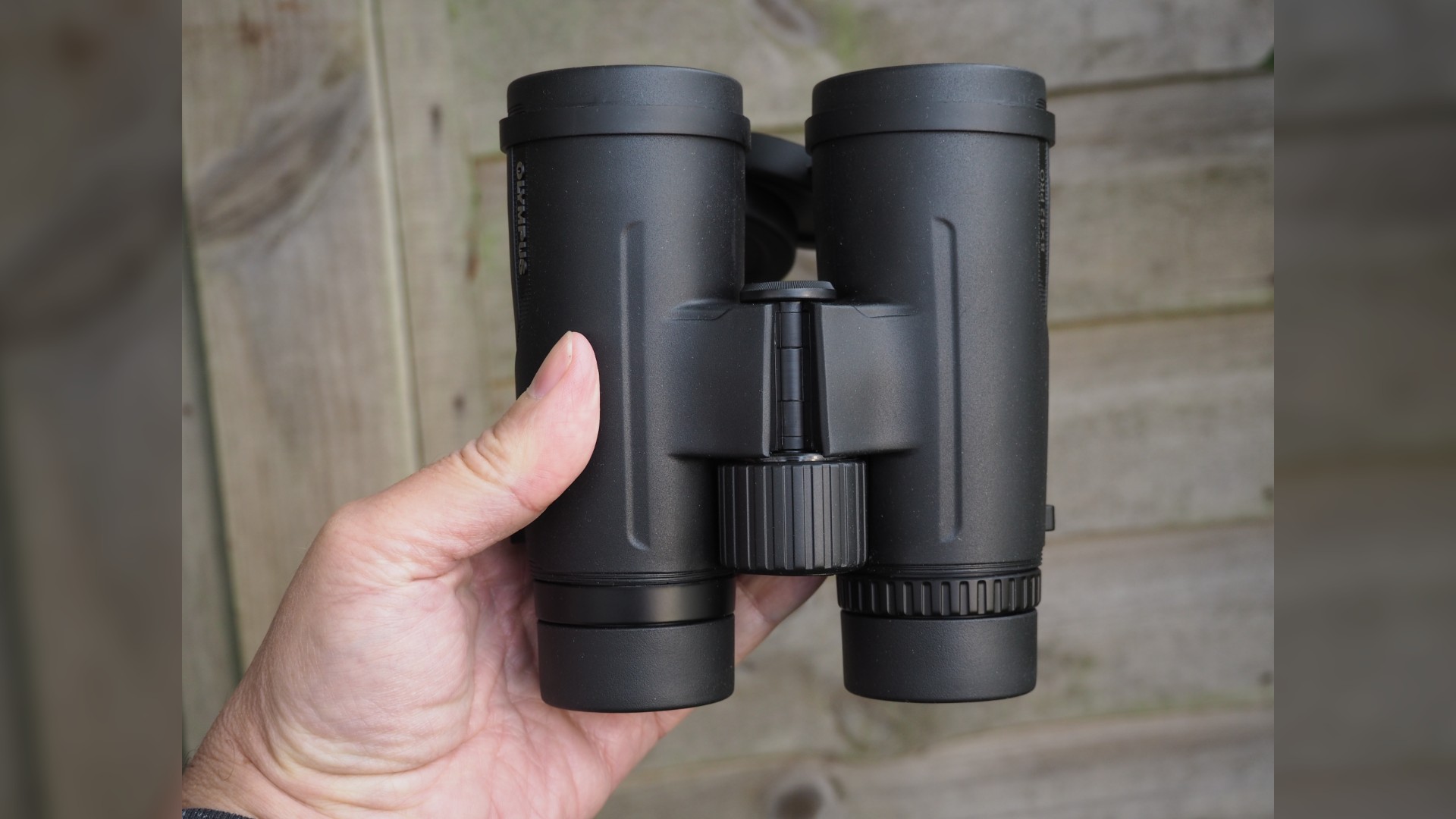
The Olympus 8x42 Pro binoculars feel well built and reassuringly weighty when gripped in the palm. The binoculars weigh 1.48 lbs (670 g). As always, it is a trade off between specifications and portability with any set of binoculars. That extra weight here means that it is easier to hold these binos steady and avoid image judder when viewing distant objects.
Manually extendable eye relief provides comfort, while a dioptric ring – rigid enough to avoid accidental tweaking on our review sample – allows for fine adjustment for those of us who wear glasses. Said eyepieces extend as the user desires when twisted anti-clockwise. Again the ‘action’ here is firm, with nothing in the build feeling loose or insubstantial.
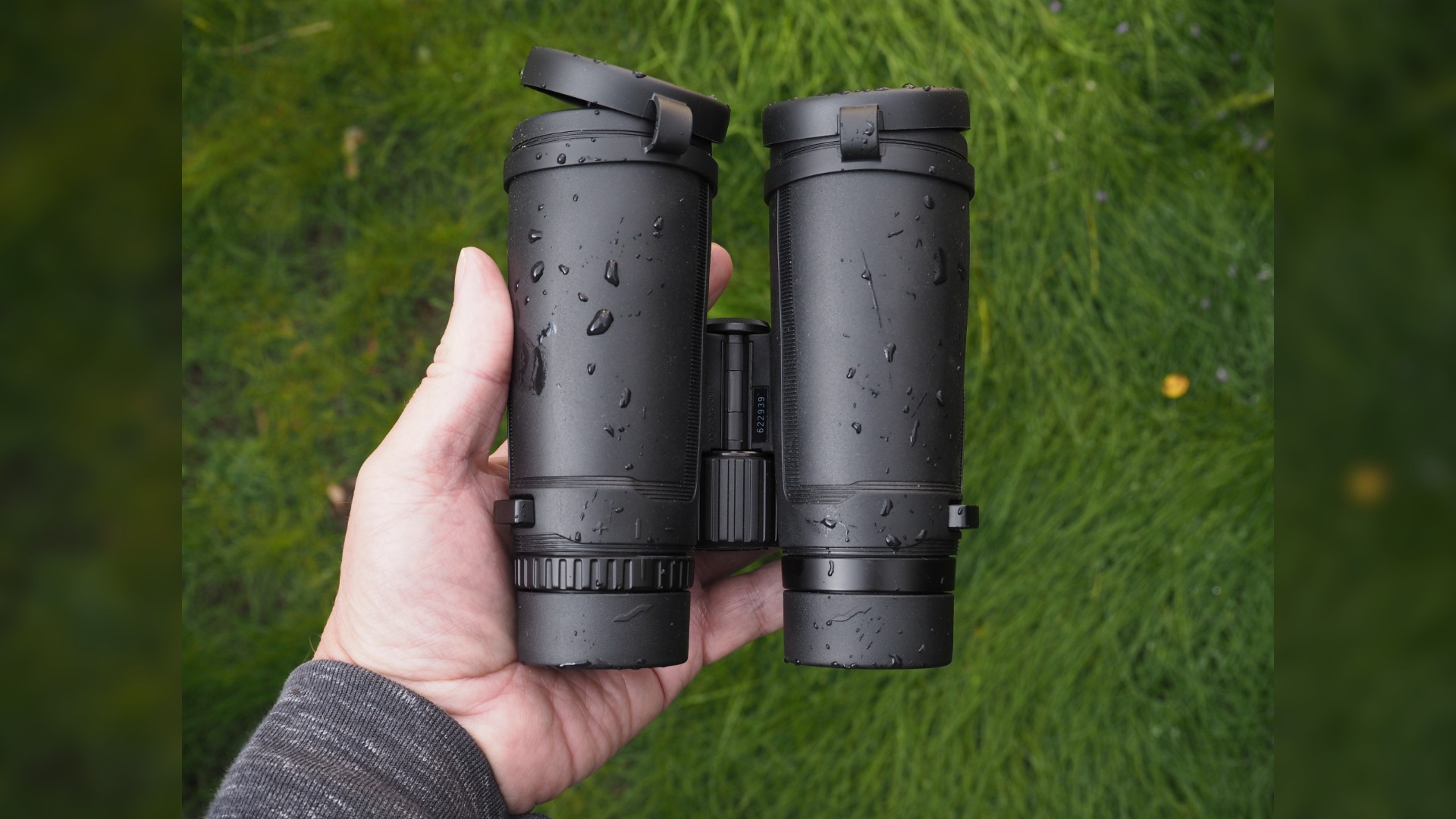
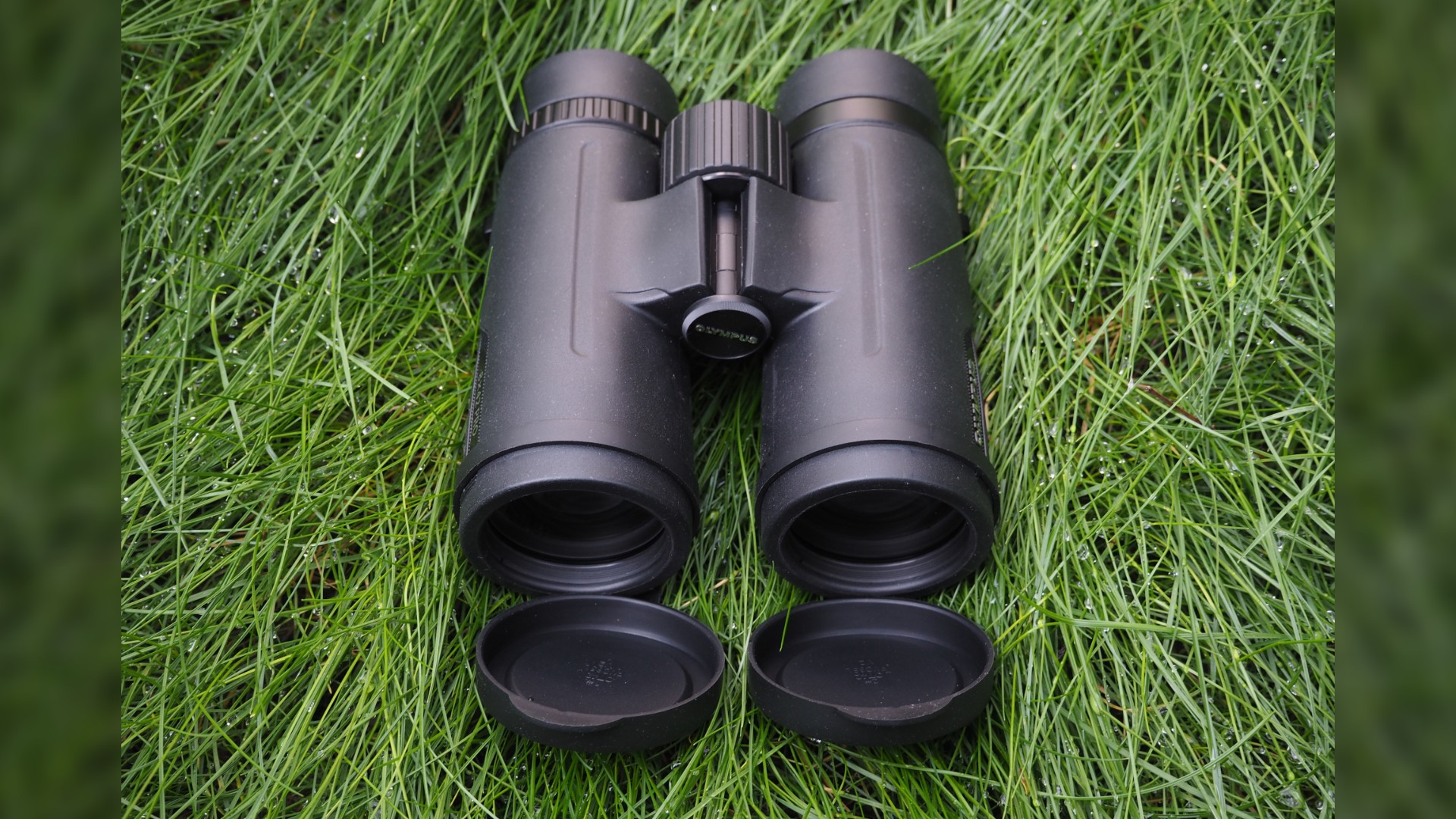
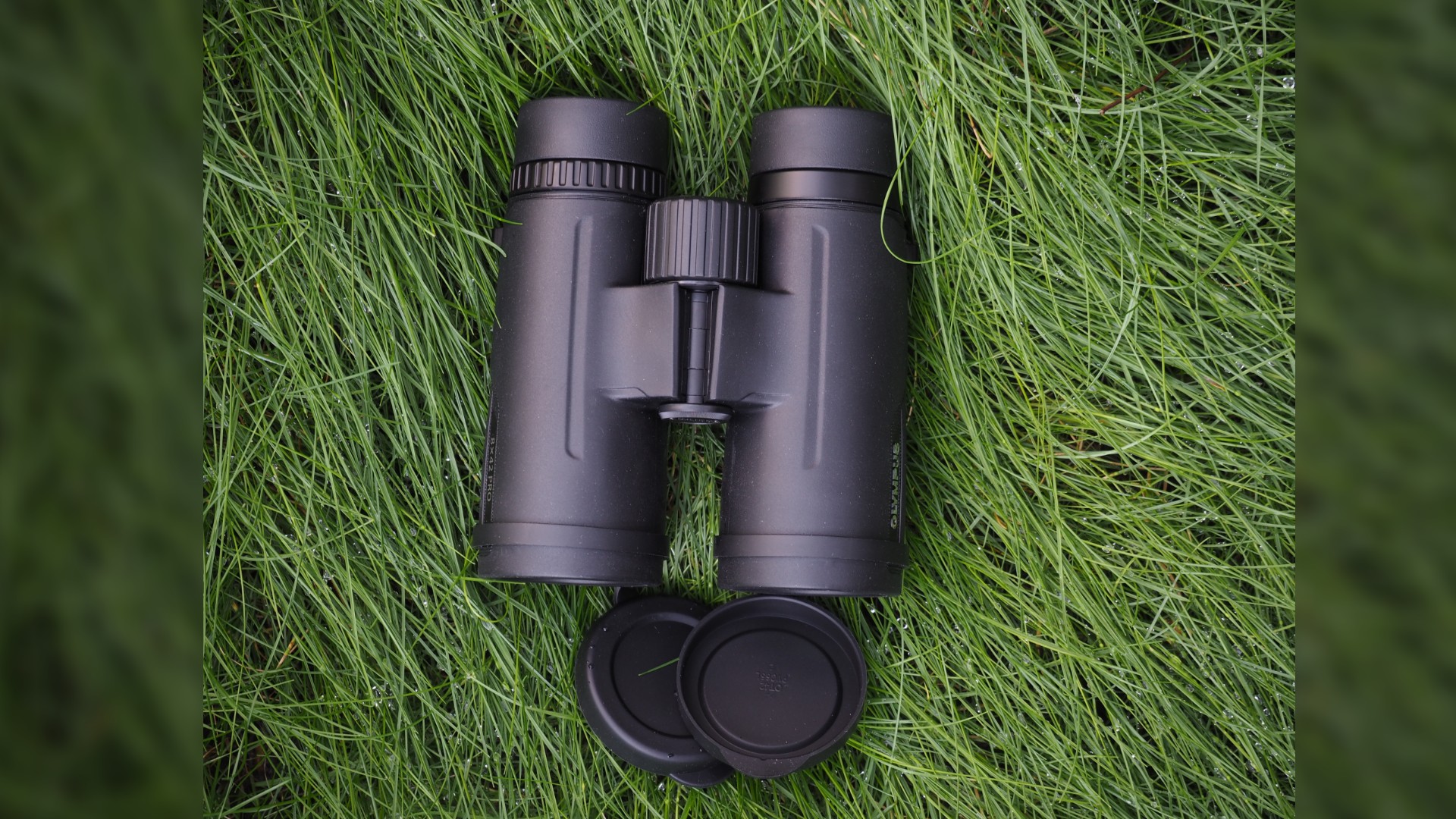
Performance wise the Olympus falls somewhere between the Steiner Safari Ultrasharp 10x26, lightweight but without image stabilization built in, and the Canon 10x20 IS, which provides battery-powered image stabilization (at a price). In short we like the way this non image-stabilized Olympus feels in the hand and it doesn’t actually need image stabilization.
The rubber-feel surface, while smoother and less roughened than some, also further aids a steady and comfortable hold. Rubber lens caps are tethered to the front of the device via a band, which means that they flap downwards clear of the lenses when the binos are in use, while slip-on eyecups are provided to the rear. The latter are conjoined, making them less easy to lose, and can also be threaded through the strap, if desired, to make doubly sure. Alternatively both can be removed and simply placed back in the box or the provided carry pouch for safekeeping.
In general terms though, when it comes to the Olympus 8x42 Pro, the build quality is very good indeed, with us feeling confident that they will provide years of continued use.
Olympus 8x42 Pro: Performance
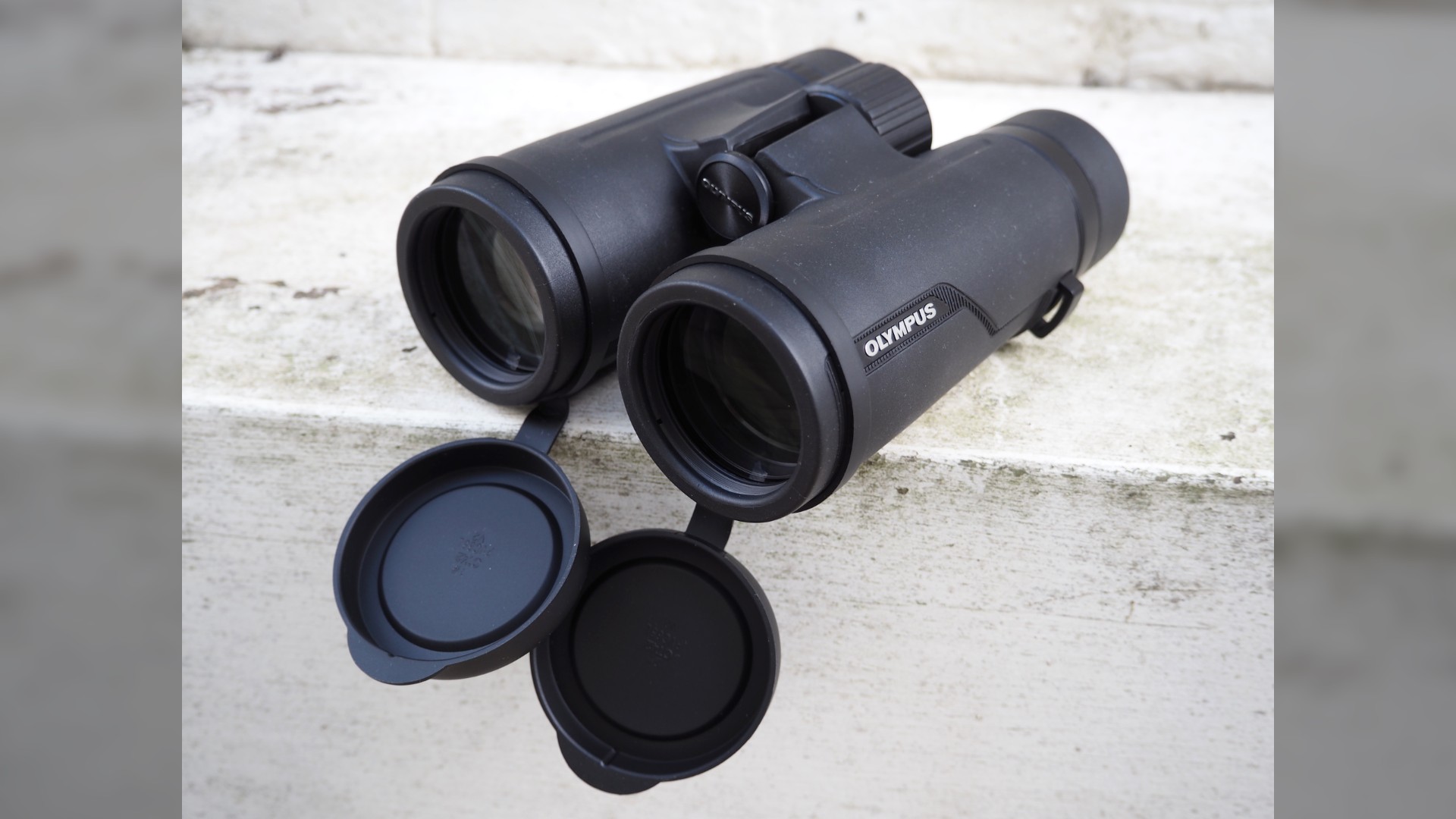
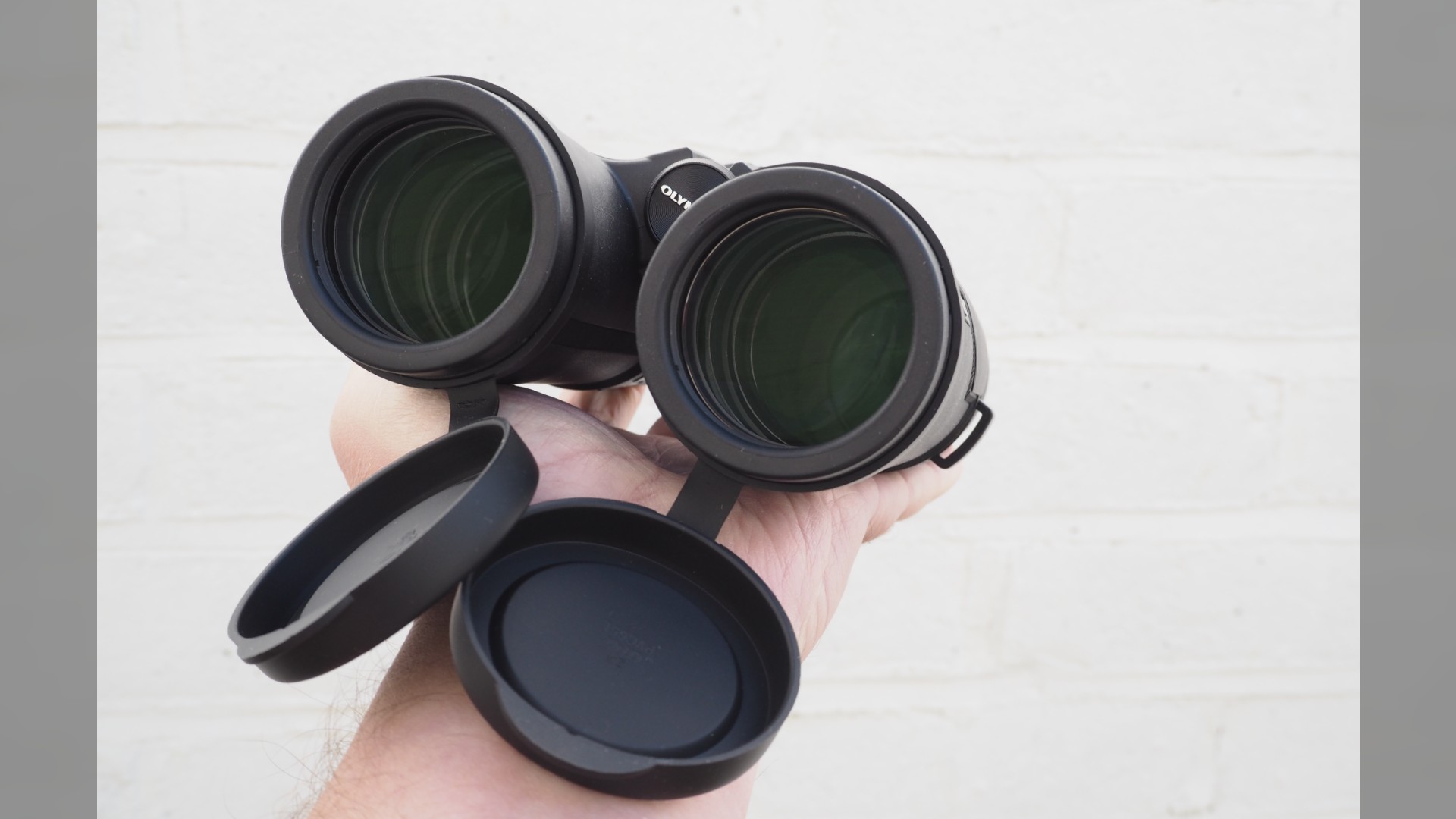
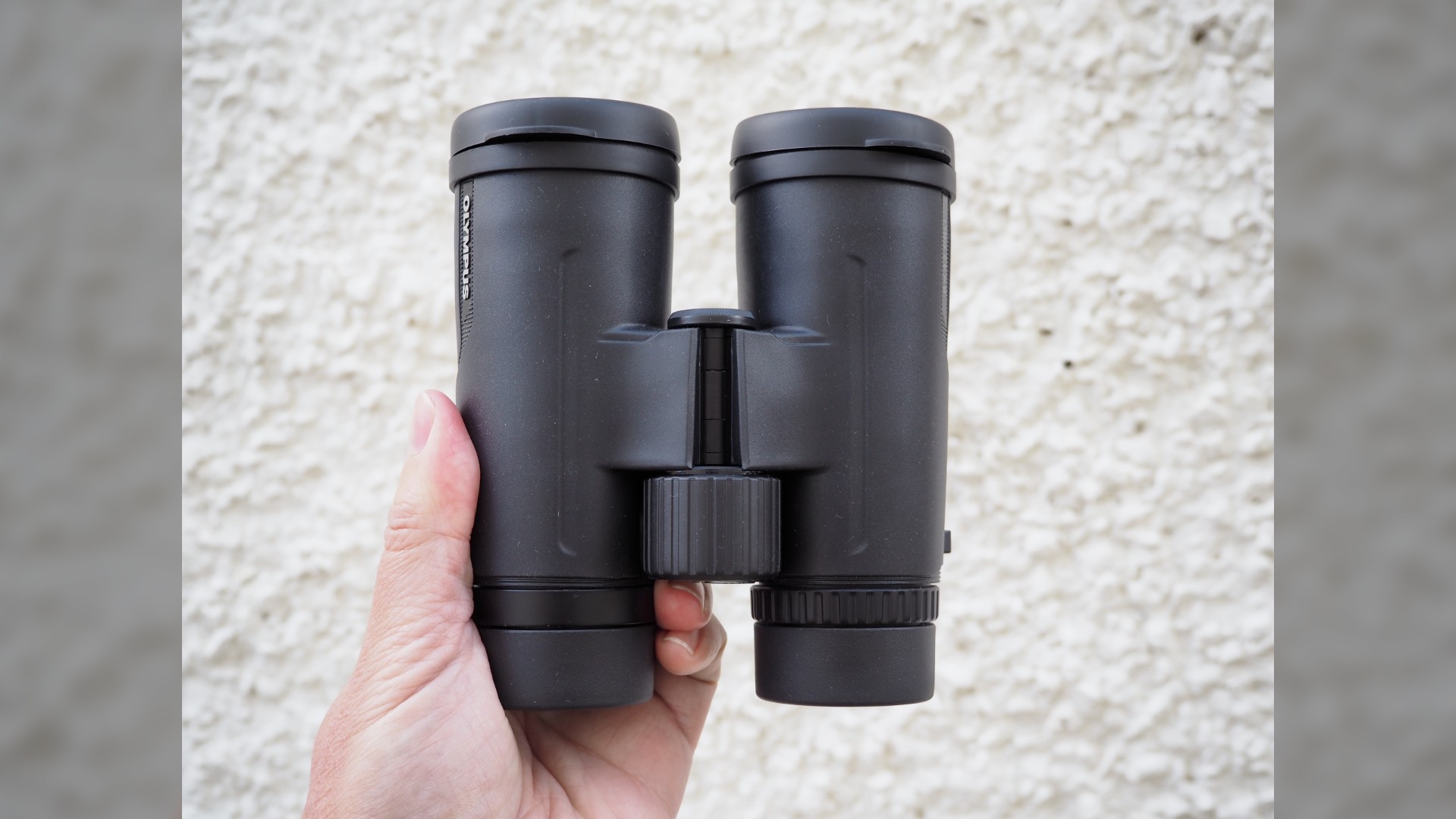
We found that the large and obvious ridged focus wheel situated between the eyepieces falls readily to hand when you’re using the binoculars. It does feel a little stiff at first when you try to adjust it, but we found it allows for smooth and precise adjustment for focus when we were looking through the eyepieces.
In terms of observation, we were able to achieve extremely clear and sharp results close into the corners of the frame. We could comfortably make out the details on birds and wildlife when using the Olympus 8x42 Pro and they felt comfortable in the hands. As mentioned earlier, despite being a compact sized option, these binoculars feel weightier and more solid than similar specification competitors. This along with the lens expertise going some distance to justifying the price tag.
Olympus 8x42 Pro: Price

The Olympus 8x42 Pro binoculars have an MSRP of $499 and £449 in the U.K, though they can often be found a good deal cheaper than that if you shop around. Alongside the binoculars themselves, you also get a soft nylon case and padded neck strap, plus two tethered objective lens caps. They also come with a 15-year warranty.
Should you buy the Olympus 8x42 Pro?
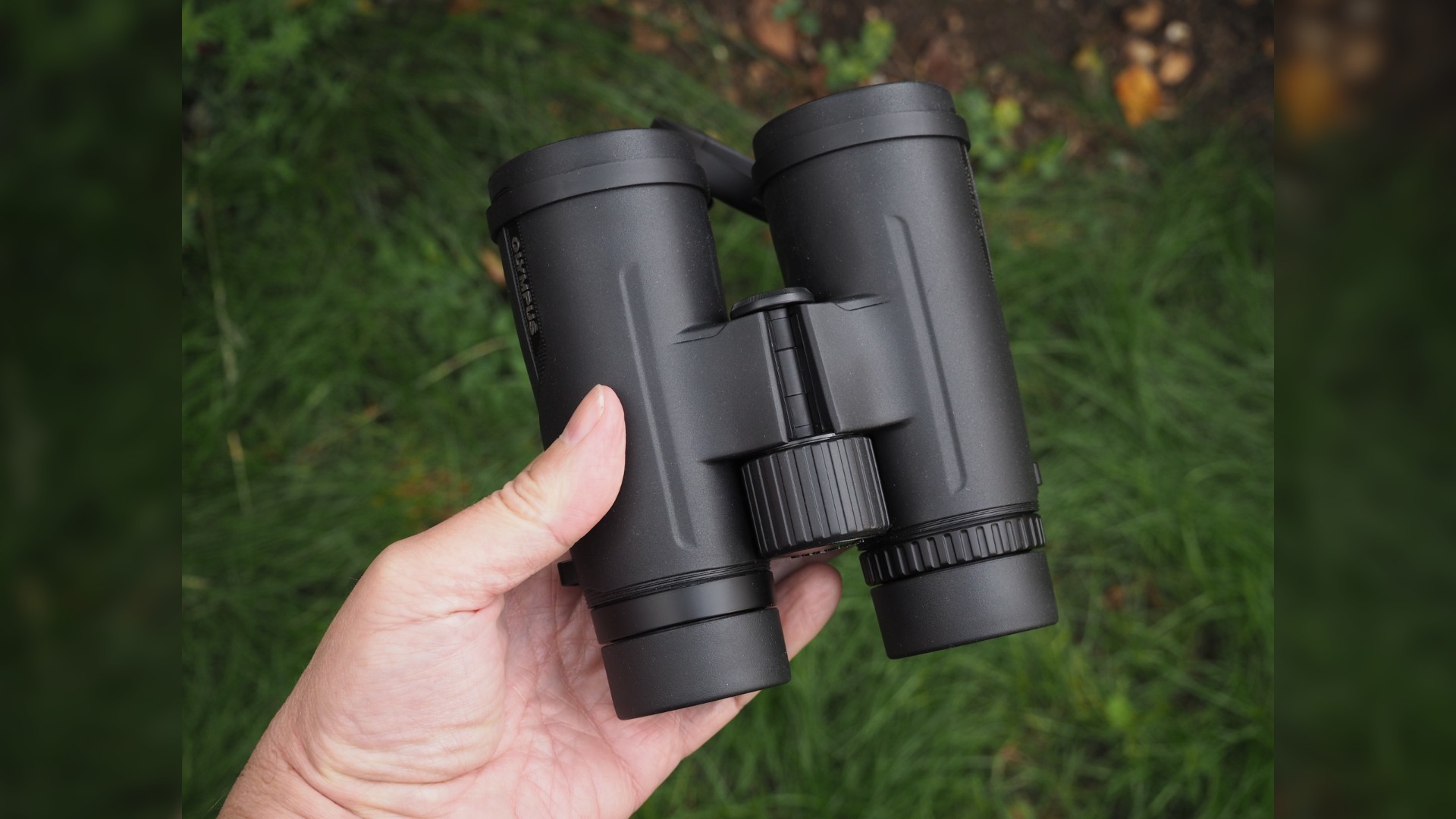
While not inexpensive, we feel the build and performance of the waterproof Olympus 8x42 Pro binoculars actually offers good value for money, especially when compared to equivalent offerings from the likes of Leica and Zeiss. More demanding users who nevertheless are on a budget will find much to favor here.
Clarity thanks to its Zuiko optics is impressive, build quality is solid and robust, and with a classic design and set up, operation is straightforward and intuitive. In short, there is not much, if anything, we can find fault with here.
If this product isn't for you
While not a budget or entry level offering, the Olympus 8x42 Pro is nevertheless a good deal for wildlife lovers and nature enthusiasts looking to drag the faraway that bit closer.
Want a you bit more in terms of magnification? Then take a look at the Olympus 10x42 Pro option. If you’re going to be observing your quarry for many hours and it's image stabilization you're after, then take a look at the Canon 10x20 IS, which comes in at a similar price, although doesn’t offer the Olympus’ large and bright 42 mm objective lens size.
Gavin has over 30 year experience of writing about photography and television. He is currently the editor of British Photographic Industry News, and previously served as editor of Which Digital Camera and deputy editor of Total Digital Photography.
He has also written for a wide range of publications including T3, BBC Focus, Empire, NME, Radio Times, MacWorld, Computer Active, What Digital Camera and Rough Guide books.
He also writes on a number of specialist subjects including binoculars and monoculars, spotting scopes, microscopes, trail cameras, action cameras, body cameras, filters, cameras straps and more.
